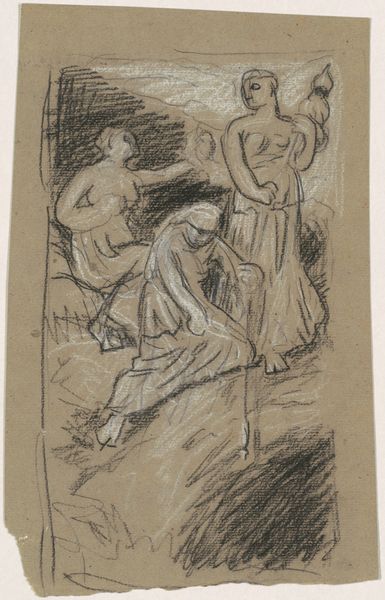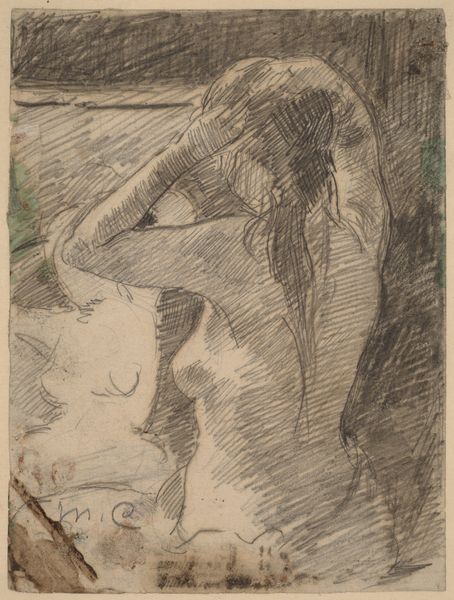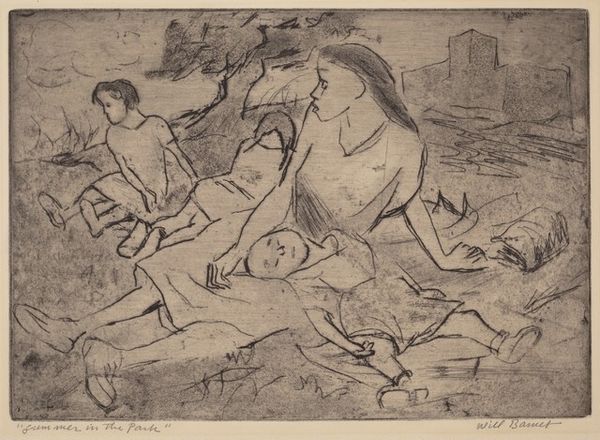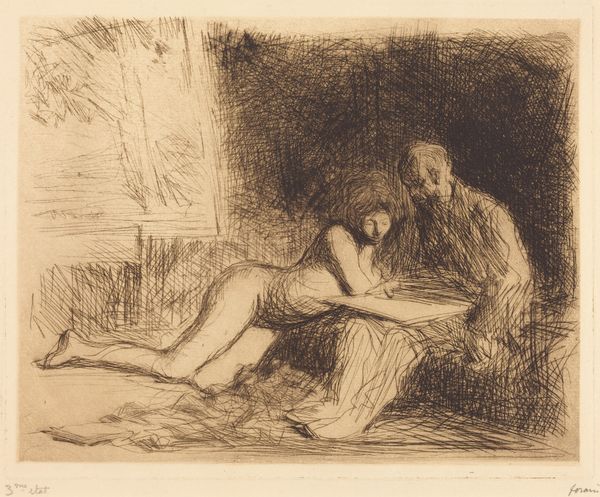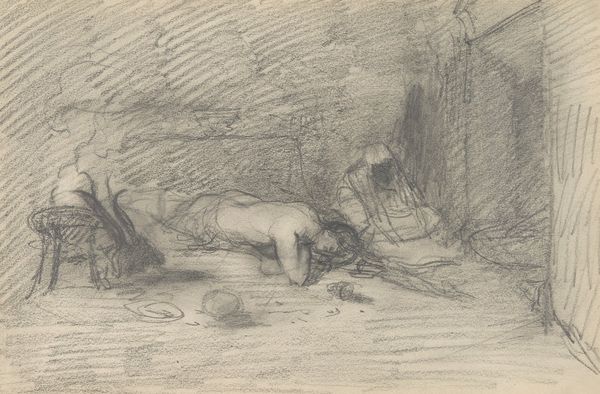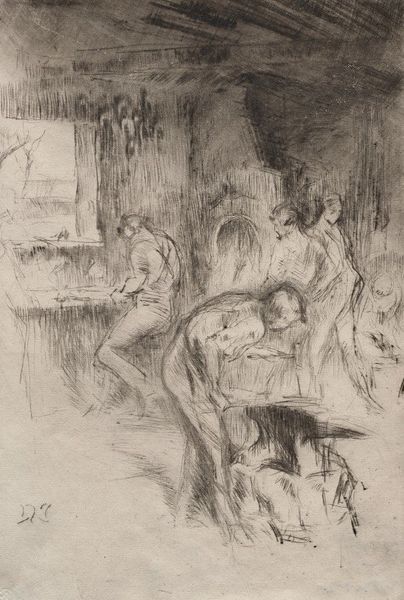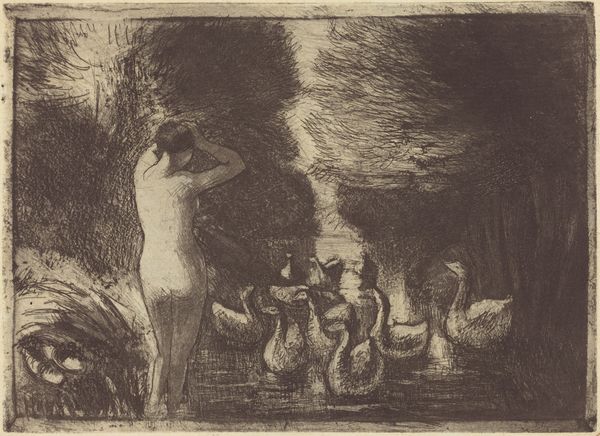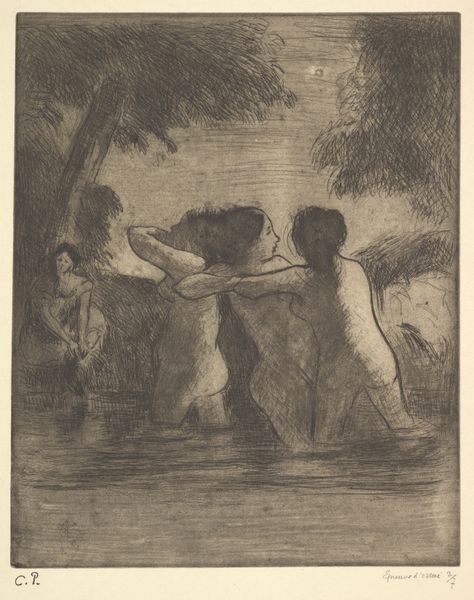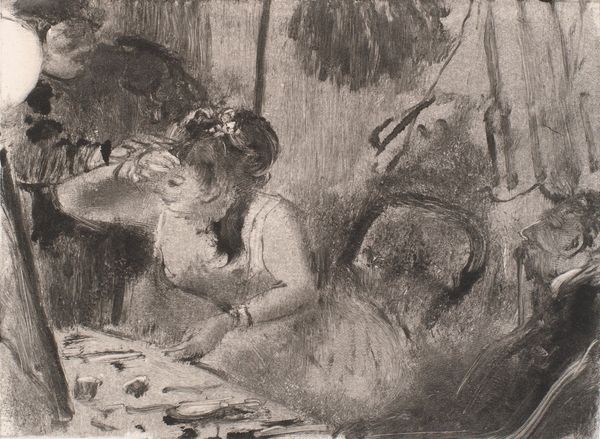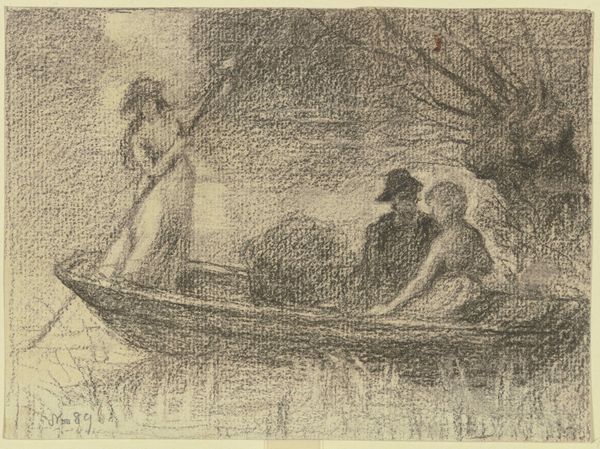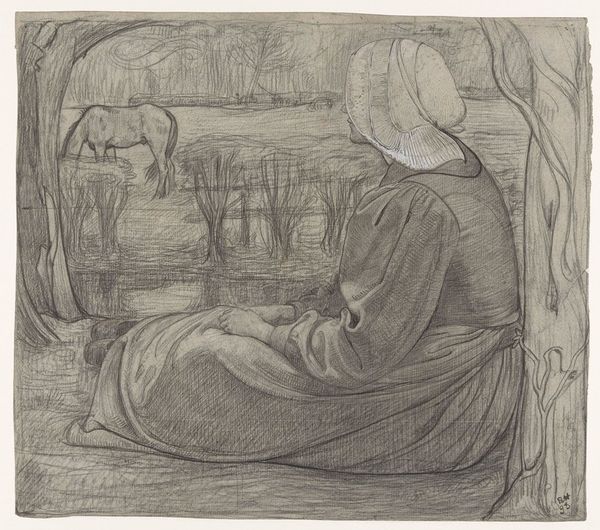
drawing, charcoal, pastel
#
drawing
#
landscape
#
figuration
#
charcoal
#
pastel
Copyright: Public Domain
Curator: Looking at "Riding children in the forest" by Ludwig von Hofmann here at the Städel Museum, it's striking how Hofmann uses what appears to be charcoal and pastel to evoke a dreamlike, almost classical scene. What are your initial impressions? Editor: Dreamlike is right. It’s so smudgy and soft, like a memory. The figures are ghostly, and the landscape dissolves into tonal variations, particularly focusing on the tangible application of charcoal on textured paper. It really emphasizes process over precise representation, doesn't it? Curator: Absolutely, and I think that softness ties into Hofmann’s involvement with the Arts and Crafts movement. It rejects the industrial, mass-produced aesthetic. This ties back to late 19th century anxieties about industrialization and a longing for simpler times. There's this idyllic vision that served as social commentary during immense industrial growth and social disruption. Editor: Yes! And think about the very physical act of rendering this scene. The blurry edges and the way the charcoal sits on the surface - you get a real sense of the artist's hand, a directness lost in mass production. How the work reflects the production process became as much a topic of engagement for audiences as the visual representation it rendered. Curator: It's an imagined world. Hofmann often drew on themes of youthful innocence, but it has an overtone of an eroticism associated with Pan figures. How does that combination play into the social narrative of art at that time? Editor: Good point. The figures are romantic, but with that blurring of bodies, particularly in the handling of nude figures in a forest landscape, it avoids feeling hyper-realistic. More attention can then be paid to how form arises directly from material choices and physical actions, which would speak to a more liberated artistic spirit at that moment. Curator: Ultimately, it's Hofmann's technical choice that conveys not just a scene, but a mood steeped in nostalgia and perhaps an unachievable ideal of life outside an increasingly mechanized existence. Editor: A poignant blend, reminding us how closely our ideals and material choices intertwined. I’m left wondering about the artist’s access to and choices among the range of pastels and charcoal at this time - as well as the audience who engaged with and appreciated such artwork.
Comments
No comments
Be the first to comment and join the conversation on the ultimate creative platform.
